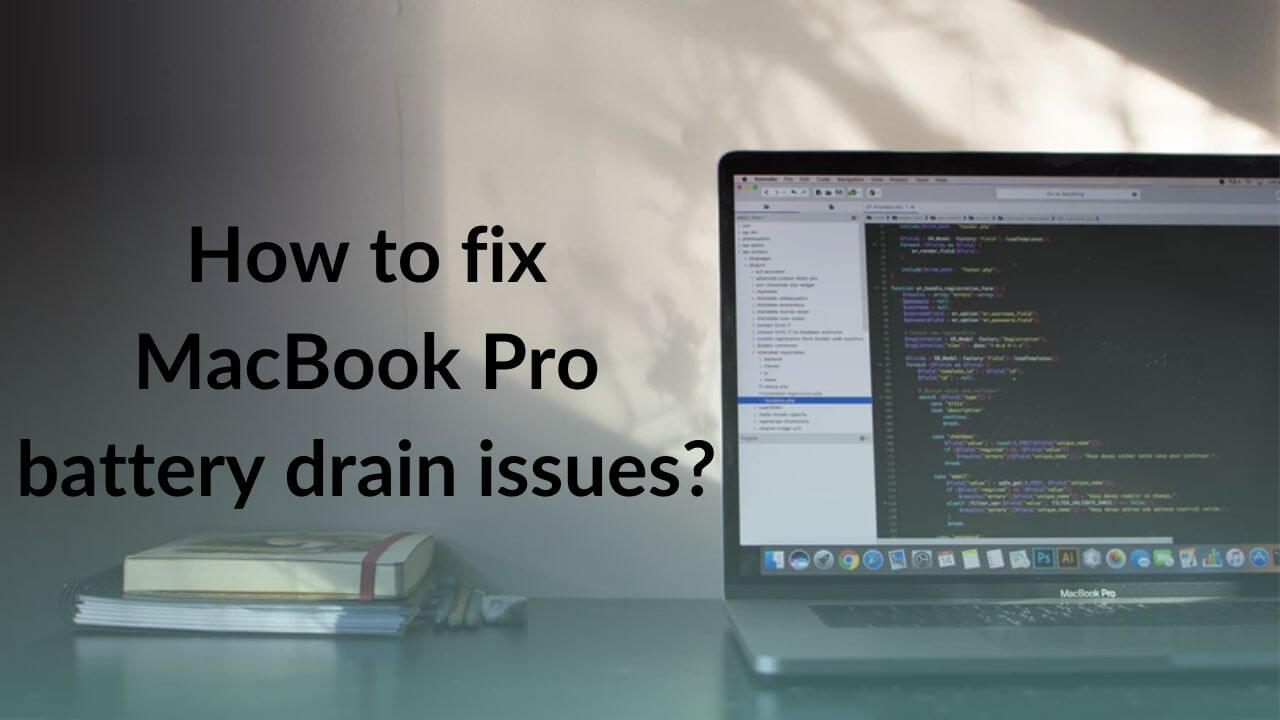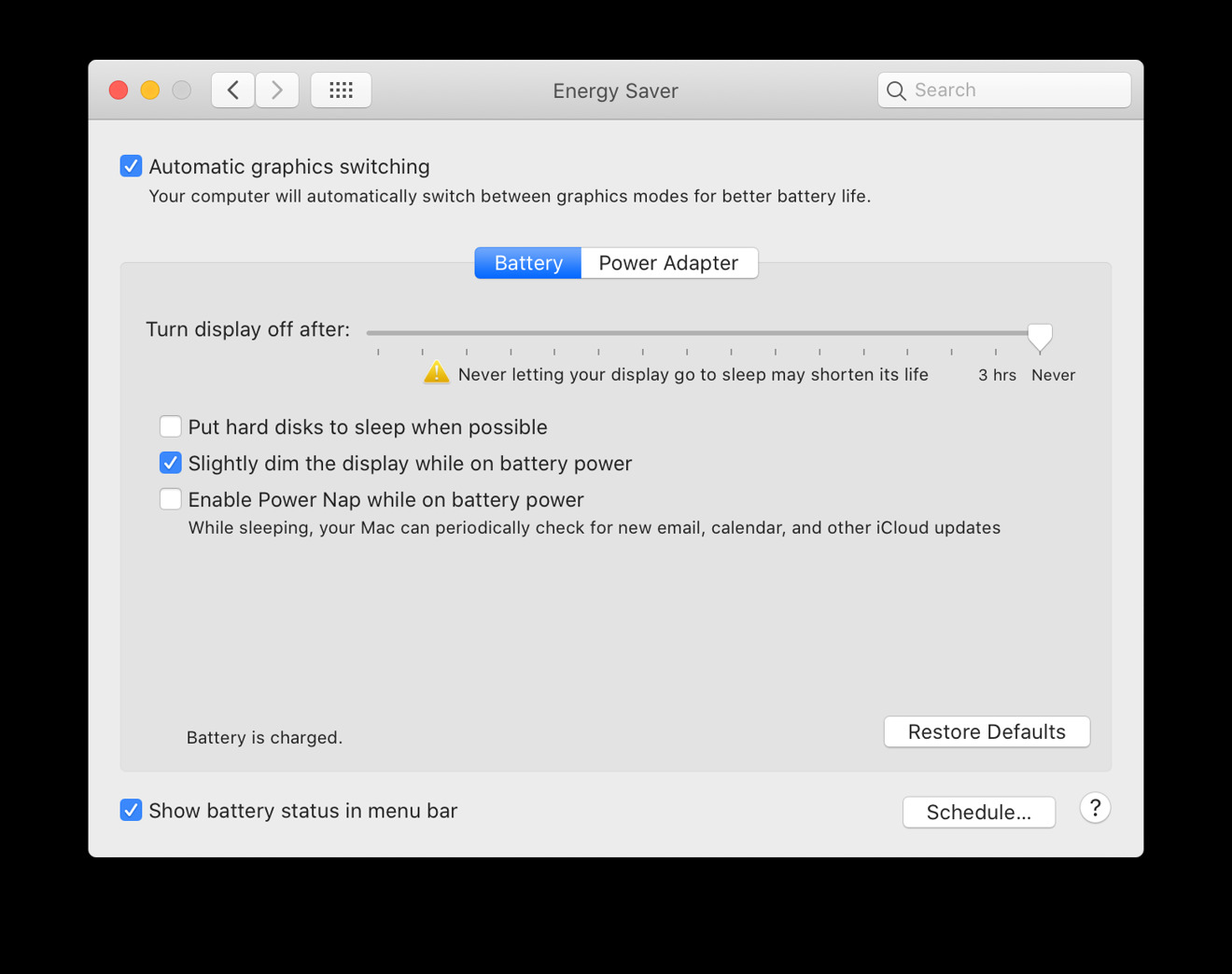Battery Drain The Game Mac OS
Battery Drain on Mac os bigsur beta 11.1 You’re now watching this thread and will receive emails when there’s activity. Click again to stop watching or visit your profile to manage your watched threads. Track Down the Culprits Using Activity Monitor. The very first thing you should do to resolve the. Another quick thing you can do to help with battery drain issues after installing macOS Big Sur is simply restarting your computer. A reset can help end random processes and other functions that can be the cause of excess battery drain. This doesn’t always work, but it is very easy to do and can sometimes fix the issue in a matter of minutes.
Every new upgrade to an operating system brings its own bugs and issues. Even though new major updates are beta tested for many months before being made publicly available, one or two bugs still manage to creep through. One of those bugs seems to be the battery draining in Big Sur. This is often accompanied by MacBooks getting very hot and fans working hard to keep them cool. Here’s why it happens and what to do about it.
Why does the battery drain faster after an update to Big Sur?
The nail reason is that after an update, your Mac needs to re-index the Spotlight database and other file databases, including Photos’ library. This is a CPU intensive task that can drive the processor hard and consume energy, draining the battery more than it would typically do.
However, in macOS Big Sur, there seems to be something else going on. Many users have reported that they found that a process called “kernelmanagerd” was consuming lots of CPU cycles.
CleanMyMac X has several tools that optimize your Mac and keep it running smoothly. One of them is the Maintenance utility: it frees up your Mac’s memory and runs useful system optimizations. Download CleanMyMac X here and run maintenance scripts — you may be able to fix the problem with battery drain in Big Sur.
What is “kernelmanagerd”?
Kernelmanagerd is a process that manages kernel extensions, or kexts, in third-party applications. It appears that what is happening is that some third-party apps are having trouble with kernel extensions, causing kernelmanagerd to work hard to resolve them and thus consume lots of CPU cycles.
Battery Drain The Game Mac Os Catalina
How to tell if the kernelmanagerd process is causing problems
- Go to Applications > Utilities and launch Activity Monitor.
- Click the CPU column to order processes by the CPU cycles they are using.
- Look for a process called “kernelmanagerd.”
- If you see it and it’s consuming close to or more than 70% of CPU cycles, that’s why your battery is draining more quickly.
How to fix battery drain in macOS Big Sur
Spotlight app can also be the reason why your Mac battery drains quickly. After the upgrade, Spotlight starts making new indexing of the disk, which can last up to two days and consume lots of energy.
Here’s how to check whether Spotlight is still indexing:
- Click on the Spotlight icon in the menu bar in the top right corner.
- Type a couple of characters into the search bar.
- If you see a progress bar with “Indexing…” in it, that means Spotlight is indexing and probably consuming a huge number of CPU cycles.
If Spotlight is indexing, the only thing you can do is wait. The good news is that when it’s done, your battery will be back to normal.
If you checked Activity Monitor for kernelmanagerd and found it consuming CPU cycles, the culprit probably is some software. Users reported that both Sophos Home and Malwarebytes caused kernelmanagerd to consume lots of CPU cycles and battery power, but these apps are likely not the only ones. Other programs that tend to work in the background can also drain your Mac.
You can use CleanMyMac X to remove any app and its data. CleanMyMac X allows you to uninstall many apps in one go, which is incredibly useful if you have lots of programs you don’t use anymore.
Reduce the load on the CPU
One of the biggest contributors to an overworked CPU is having a large number of browser tabs open. While this is convenient, it consumes RAM and puts pressure on the CPU, draining battery life. This is especially true if you’re using Google Chrome.
You should also make sure that Chrome and other web browsers are up to date and disable any extensions you don’t use.
It’s a good time to review login items, too. These processes launch when you boot your Mac and run in the background. They may also be reducing battery life. To disable startup items, go to System Preferences, and then navigate to Users & Groups. Here, select the apps that are launching on Mac’s startup and disable them by pressing “—.”
There are a number of reasons why your Mac’s battery might be draining more quickly after you upgraded to Big Sur. Fixing them could be just a matter of waiting for Spotlight to finish indexing, or you might need to take further action. Hopefully, you managed to get to the button of the problem and stopped your Mac battery from running out of charge so fast.
This article applies only to Mac computers with an Intel processor.
About the lithium-ion battery in your Mac notebook
Mac notebook batteries use lithium-ion technology. Lithium-ion batteries charge quickly, are long-lasting, and currently provide the best technology to power your computer.
Game Mac Download
All rechargeable batteries are consumable components that become less effective as they get older—and their age isn't determined only by time. A battery's lifespan depends on its chemical age, which is affected by factors such as its temperature history and charging pattern. As your notebook's battery ages chemically, its charging capacity gets smaller.
With these tips for maximizing battery performance, you can get the most out of all your Apple devices. And with battery health management, your Mac notebook can take battery optimization even further.
How battery health management helps
The battery health management feature in macOS 10.15.5 is designed to improve your battery's lifespan by reducing the rate at which it chemically ages. The feature does this by monitoring your battery's temperature history and its charging patterns.
Based on the measurements that it collects, battery health management may reduce your battery's maximum charge when in this mode. This happens as needed to ensure that your battery charges to a level that's optimized for your usage—reducing wear on the battery, and slowing its chemical aging. Battery health management also uses the measurements to calculate when your battery needs service.
While battery health management benefits your battery's long-term lifespan, it can also reduce the amount of time your Mac runs on one battery charge when capacity limits are applied. If your priority is making your Mac notebook last as long as possible before recharging, you can turn the feature off.
When battery health management is turned on, your battery's maximum charging capacity might be limited. Although the feature is designed to improve your battery's lifespan, the limited maximum capacity might update your battery status menu to indicate a need for service. Your Mac calculates when to recommend service for your battery based on battery health management being continuously enabled.
Battery Drain The Game Mac Os X

How to control the battery health management feature
Battery health management is on by default when you buy a new Mac notebook with macOS 10.15.5 or later, or after you upgrade to macOS 10.15.5 or later on a Mac notebook with Thunderbolt 3 ports.
If you want to turn off battery health management on a Mac notebook with an Intel processor, follow these steps:
- Choose System Preferences from the Apple menu , then click Battery.
- Click Battery in the sidebar, then click Battery Health.
- Deselect 'Manage battery longevity'.
- Click Turn Off, then click OK.
Free Game Mac

Note that turning this feature off might reduce your battery's lifespan.
Learn more
If you feel that your battery isn't lasting as long as it should, you can learn about getting service for your Mac notebook.